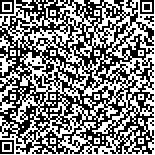| 摘要: |
| 目前绿潮遥感监测手段大多基于单一遥感数据, 局限性很大, 为了弥补监测中空间分辨率和时间分辨率低的问题, 基于多源遥感数据, 结合虚拟基线高度浮藻指数VB-FAH(virtual-baseline floating macroAlgae height)和人工辅助判读方法, 对2015—2016年黄海发生的绿潮(大型绿藻——浒苔(Ulva prolifera))进行了动态监测, 并利用两景同步影像比较了高分一号卫星WFV(GF-1 WFV)数据和资源一号04星WFI(CBERS-04 WFI)数据的监测结果, 同时也对卫星影像监测和船载监测结果进行了比较。结果表明: CBERS-04 WFI数据的监测结果与GF-1 WFV数据相比产生了15.3%~37.32%的相对偏差,主要原因是空间分辨率的差异导致的混合像元效应。对卫星影像监测结果与船测数据进行叠加对比,可以发现在Ⅲ级以上的绿潮数量级中卫星影像的监测精度较高。绿潮暴发的过程持续100 d左右, 4月底—5月初绿潮开始在苏北浅滩浊水区出现, 随着外界因素逐渐达到适宜生长的条件, 绿潮不断生长直至暴发, 并随黄海表层流向北漂移, 直至山东半岛南部沿岸, 7月份和8月份是绿潮的消亡阶段, 8月中旬绿潮基本消亡。本研究成果提高了监测精度, 可为绿潮的防控提供有效的信息支持。 |
| 关键词: 遥感监测 多源遥感数据 虚拟基线高度浮藻指数(VB-FAH) 绿潮 黄海 |
| DOI:10.11759/hykx20160928002 |
| 分类号: |
| 基金项目:科技部基础支撑项目(2014FY210600); 中国科学院战略性先导科技专项(A 类)(XDA11020000); 中国科学院重点部署项目(KZZD-EW-14); 中国科学院烟台海岸带研究所人才引进项目; 青岛海洋科学与技术国家实验室鳌山科技创新计划项目(2016ASKJ02) |
|
| Study of remote sensing monitoring and comparison of green tide in the Yellow Sea based on VB-FAH index |
|
ZHENG Xiang-yu,GAO Zhi-qiang,XU Fu-xiang,NING Ji-cai,SONG De-bin,ZHENG Bing-ji
|
| Abstract: |
| Most current monitoring methods are based on single remote sensing data, and thus have considerable limitations. To compensate for spatial resolution and time resolution deficiencies, multi-source remote sensing data are used to capture the green tide (large green algae-Ulva prolifera) in the Yellow Sea in 2015 and 2016. Data are then monitored and analyzed through the VB-FAH index and a manual assisted interpretation method. Monitoring results of GF-1 WFV and CBERS-04 WFI are then compared with two scene synchronous images, and results of ship monitoring and satellite image monitoring are also compared. Results show that compared with GF-1 WFV data, monitoring results of CBERS-04 WFI data produce a relative deviation of 15.3%~37.32%; this is mainly attributed to the mixed pixel effect caused by the different spatial resolution. By superimposing the monitoring results of satellite images on measured data for comparison and analysis, it is found that the relative monitoring accuracy is higher above grade III. The green tide outbreak lasts about 100 days, from late April to early May. It initially appears in the turbidity zone of the Northern Jiangsu Shoal, and external factors enable it to gradually reach suitable growth conditions. It then continues to grow until it becomes an outbreak, and then flows northwards by the Yellow Sea surface flow until it finally arrives on the southern coast of the Shandong Peninsula. July and August are the extinction stages of the green tide and by mid-August it has almost completely disappeared. Results of this study can be used to improve monitoring accuracy and provide effective information support for the prevention and control of green tide. |
| Key words: remote sensing monitoring multi-source data virtual-baseline floating macro-algae height green tide the Yellow Sea |
